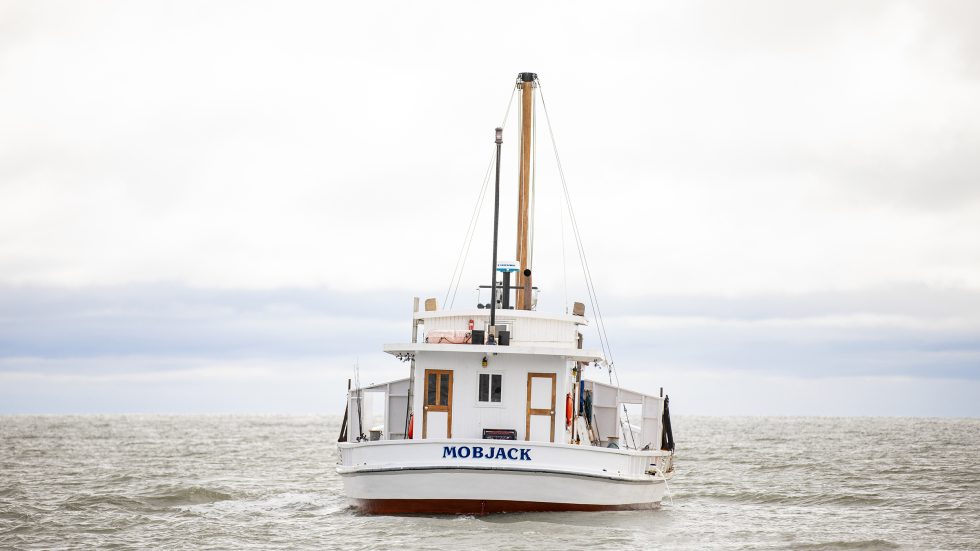Over the past decade, Americans have gotten used to filling up their cars, their trucks and, increasingly, their boats, with gasoline that is “blended” with ethanol. In 2005, Congress authorized a Renewable Fuel Standard (RFS) that required greater amounts of biofuels be used in generating the nation’s fuel supply. Two years later, the mandate was strengthened, in part by vesting the Environmental Protection Agency (EPA) with the authority to set annual figures for the amount of biofuels refiners must use in proportion to the overall energy produced. As set out in the law, 36 billion gallons of biofuels must be blended into gasoline or diesel supplies by 2036, a quadrupling of the amount in the market in 2008.
Most people will recall that these laws were borne of an era when drivers were having to pay $4.50 for a gallon of gas and there was nationwide anxiety over dependency on foreign oil imports, especially from countries like Venezuela and Iran. Yet, even after fuel prices decreased and the “shale boom” made the U.S. less susceptible to threats of fuel cutoffs from rogue oil producers, the political logic behind alternative energy persisted, as part of what the Obama administration called an “all-of-the-above” energy policy. However, in an unforeseen twist, the EPA has found itself regulating an RFS program that demands higher levels of biofuel content from refiners, chiefly in the form of rising levels of corn-based ethanol, even though overall energy consumption in America is now less than what Congress anticipated when it authorized the program.
Ethanol in fuel is not in itself a bad thing, and use of gasoline blended with up to 10 percent ethanol, the so-called E10 standard, is supported throughout much of the marine industry. But at higher levels, namely up to 15 percent ethanol (E15), the fuel mixture poses a variety of risks to outboard engines. Because the energy output is lower with ethanol than gasoline, fuel economy is reduced. And since E15 has drifted further into the marketplace over the last three years — at last count it was available at 90 marinas in 14 states across the Midwest and some parts of the South — there have been numerous complaints that it causes corrosion, clogging outboard engines. Also, ethanol fuel “expires” in about 90 days as it separates into gasoline and water layers; even before then the octane level of the fuel may decrease, another source of strain on boat engines.
NMMA Works to Ease Burden of EPA Mandates on Boaters
The National Marine Manufacturers Association (NMMA) has been at the forefront of challenging the RFS mandates that have given life to E15. The NMMA raised objections soon after the EPA granted a partial waiver in January 2011 in order to allow E15 into the market. Manufacturers still needed to conduct extensive tests to ensure that E15 was compatible with outboard engines, and presumably regulators such as the EPA would be interested in knowing the outcome of those tests before setting higher biofuel requirements. In that sense, the EPA’s decision to move from a 10 to 15 percent ethanol requirement was premature. And it had further knock-on effects, as Nicole Vasilaros, NMMA’s director of federal and legal affairs, points out. “It bifurcated the marketplace,” she says, noting that under the EPA’s own rules E15 cannot be used in boats built before 2001. Moreover, using more than E10 fuel voids the warranties on all current models of marine engines.
The NMMA and other stakeholders — including the American Petroleum Institute and the Grocery Manufacturers Association — began challenging aspects of the EPA’s mandates in court. In 2012 and again in 2014, the NMMA had its cases dismissed. Although the group may back other legal challenges, Vasilaros acknowledges that the “momentum is there” for ethanol to stay in the marketplace. Instead Vasilaros says the industry “is not waiting around for the EPA,” and NMMA is working on other fronts to mitigate the costs associated with E15 in the marketplace, and to find alternatives to the E15 blend.
Raising Awareness and Finding an Alternative to the Alternative
In 2013, NMMA distributed an E15 warning label to its members, and this year the group joined with the Outdoor Power Equipment Institute and BoatU.S. to launch an educational campaign called “Look Before You Pump.” It aims to make sure people are selecting the correct fuel for their vehicles. Part of the campaign is a sticker at fueling stations that offers clear guidance: E10 or less is okay; E15 or more may cause damage to boat engines. The sticker also directs boaters to the campaign’s website at lookbeforeyoupump.com.
In this way, NMMA is attempting to minimize the potentially significant costs of boaters misfueling, not to mention the risks that boaters may get stranded in remote waters once their boat’s fuel lines clear out the last of the regular gasoline and the engine stops working because of the E15 fuel. In general, despite having its own “misfueling mitigation plan,” the EPA has overlooked these risks.
The NMMA is also backing research into other renewable fuels. Perhaps the most promising alternative to ethanol is isobutanol. Isobutanol is a biofuel derived from corn, like U.S.-made ethanol, yet it yields the same emissions as pure, EPA-approved test gasoline. But crucially, isobutanol produces 30 percent more energy than ethanol. The NMMA, supported by the Department of Energy, recently concluded a series of multi-year tests with isobutanol, and the results are currently being compiled. The hope is that isobutanol will in time replace E15. Boaters “need something that works,” insists Vasilaros. “Simply increasing the content of ethanol does not.”
EPA Delays Release of 2014 Fuel Standard Numbers
As if to highlight the problems with the E15 requirement, on November 21 the EPA announced it would delay release of the final 2014 numbers of renewable fuel obligations until 2015, even though the RFS stipulates the numbers be released annually.
In the NMMA’s response to the news, Vasilaros wrote: “The delay clearly demonstrates why Congress must act to fix the broken mandate. The move creates even more uncertainty in the marketplace and adds to the confusion surrounding the implementation of the Renewable Fuel Standard.”
Based on the EPA’s November 21 decision, E15 looks set to remain in the marketplace for at least the next year. NMMA does not anticipate a repeal of the current renewable energy regime, but the group holds out hope for reform that will do a better job of taking boaters into account. In the last Congress, more than 220 Republicans and Democrats supported legislation that would alter the current RFS. Predictably, though, the bipartisan effort to modify the fuel mandates took a backseat to the November election. But if anything the movement for reform will only be stronger once the new Congress convenes.
Congress may eventually curb the RFS and its creeping requirement of higher ethanol content in fuel supplies. In the meantime, the NMMA is working to spread the word on the risks of misfueling, while also exploring alternatives to ethanol.



